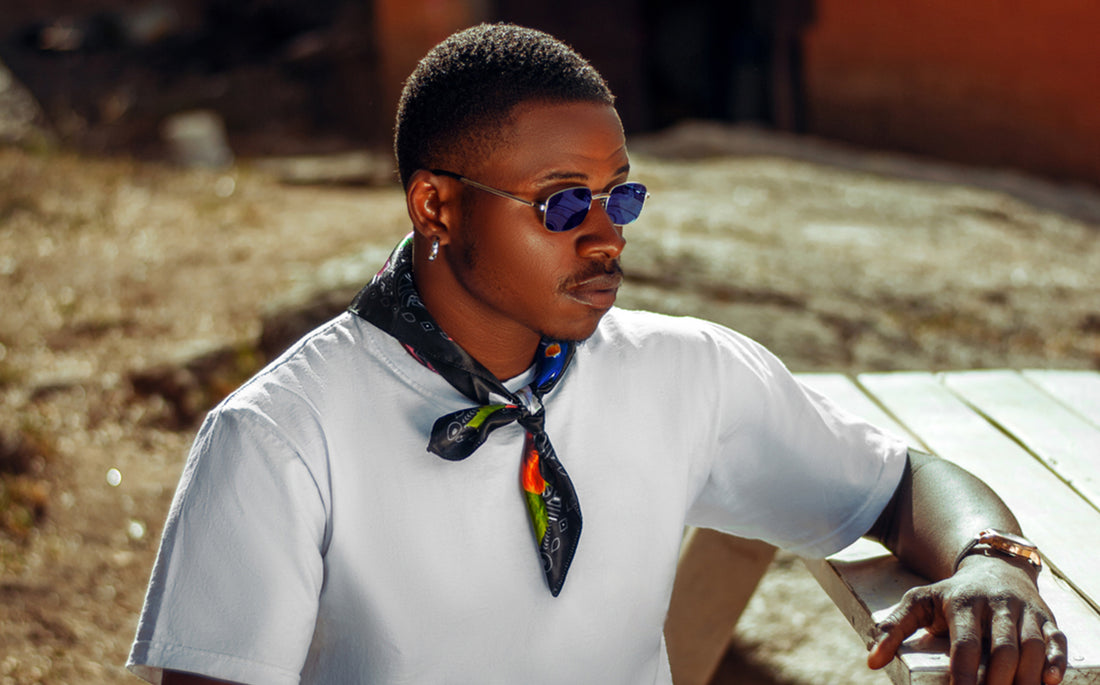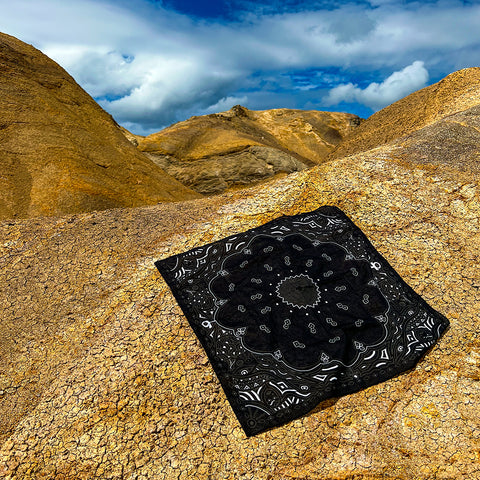WHAT BANDANA FOR HIKING ?
Learn About the Significance of Bandanas and Unlock Your Ideal Choice... We're Here to Share All the Insights.
You might have been underestimating bandanas, perceiving them as unappealing or without purpose. However, let me assure you, that's not the case at all. Prepare to be pleasantly surprised.
Bandanas offer a multitude of practical uses (maybe not exactly a million, but certainly several dozen, as we'll discuss shortly), and they practically weigh nothing at all.
There's a clear reason why these timeless accessories are experiencing a resurgence. Hikers and backpackers are realizing that the latest options aren't always the greatest.
The bandana takes the spotlight for its remarkable versatility, capable of replacing various items in your backpack.
Opting for a bandana is a wise decision, ensuring quality.
And if you're feeling a bit impatient and just want to know my top recommendation, here it is. I'll explain the reasoning behind it in a moment.
I'm a passionate hiking enthusiast.
Whenever the opportunity arises to escape into the wilderness, I grab it eagerly. Over the years, I've had the chance to extensively test a wide range of gear.
I've spent countless hours engrossed in reviews and stories shared by fellow hikers, exploring their perspectives on what works and what doesn't with each piece of equipment.
I can't stand the disappointment of buying a low-quality backpack, only to realize I need an upgrade shortly afterward. I prefer investing in the right gear right away, ensuring its longevity and avoiding the frustration of it wearing out or breaking down within just six months.
DIFFERENCE BETWEEN COTTON AND SYNTHETIC BANDANAS
Most of the gear used in outdoor activities like hiking and sports is designed to repel water. Everything from socks to moisture-wicking shirts is crafted from synthetic materials that are excellent at keeping water out, ensuring you stay dry even during sweaty endeavors.
However, bandanas stand out in this regard. Typically worn around the forehead or neck, a bandana's main role is to soak up sweat and prevent it from dripping onto your face.
Although a few synthetic bandanas are available, they are mainly targeted at anglers who need protection from the sun's reflection on water. For hikers, the priority is more about staying comfortably cool and keeping your face dry, particularly in scorching weather.
You might have been expecting a high-tech, fancy bandana made from some extraordinary materials with an impressive design.
But the truth is, when it comes to a bandana, you actually want it to be made of cotton.
Unlike most of your gear that you want to keep water away from, a bandana is specifically designed to absorb sweat and provide protection from the sun. And in this regard, cotton does an excellent job.
DIFFERENCE BETWEEN CLASSIC AND ELASTIC BANDANAS
If the term "Elastic Bandana" is unfamiliar to you, it's essentially a bandana with a stretchy and flexible design, permanently shaped like a cylinder. Imagine it like a scarf, but with a snug fit around your neck, and it's crafted from materials that can stretch and allow for breathability.
Interestingly, Elastic Bandanas can be particularly useful for activities like fishing. For example, they work well for protecting against the sun's glare on the water. These bandanas are designed to be highly breathable, so even if you cover your entire head with one, you won't feel excessively hot.
Now, let's take a closer look at the different ways you can wear them. Among the most common uses during hiking include using them as neck gaiters or masks to shield yourself from the dust that can get stirred up along the trail.
I've also heard about folks using it as an impromptu eye mask, pulling it down over their eyes at night to block out some of the sunlight and aid in sleeping.
Whether you're inclined towards an elastic bandana or the classic version depends on your intended use.
In general, the traditional bandana is more effective at keeping sweat off your face. Meanwhile, the elastic bandana offers greater versatility, as demonstrated in the image above. These elastic options are especially convenient due to their stretchiness and no-need-to-tie design, making them much easier to use. On the flip side, a cotton bandana requires tying and has a fixed size, which limits its applications in comparison.
Here are a few scenarios where the elastic bandana outperforms the regular one:
- Serving as a neck warmer for staying cozy
- Acting as a practical face mask
- Providing a quick head covering solution
- Serving as an improvised pillowcase
And let's take a look at some scenarios where a classic bandana outshines its elastic counterpart:
- Drying off after a bath
- A handy washcloth
- Acting as a preliminary filter for water (to prevent larger particles from clogging the filter)
- Doubling as a tourniquet in case of emergencies
BONUS : OTHER WAYS TO USE A BANDANA
Bandanas primarily serve as headbands, towels, or washcloths, making them excellent accessories for sports and outdoor activities. However, their utility extends far beyond these basic functions. Let's explore some additional ways you can utilize your bandana while hiking:
Hat: The most common usage. Worn as a hat, it shields your head from the sun and potential bug bites.
Sun Protection: Lower the bandana to your neck and wrap it around for added sun protection.
Tissue Substitute: While not the most pleasant option, your bandana can serve as a makeshift tissue for nasal issues.
Headband: Wrapped around your forehead, it prevents sweat from dripping into your eyes.
Sleeping Mask: Folding it over your eyes helps block sunlight for better sleep on the trail.
Warmth: Wrapped around your neck like a scarf, it retains heat in chilly conditions.
Cooling Aid: Soak the bandana in water and place it on your head or neck to stay cool while hiking.
Water Pre-Filter: Cover your water filter's opening with the bandana to strain out larger particles and extend the filter's lifespan.
Strainer: Use it to strain water from cooked noodles by squeezing them inside.
Coffee Filter: Employ it as a filter for coarsely ground coffee.
Napkin: Handy for wiping your hands.
Tourniquet (Classic Bandana Only): In emergencies, tightly tie it around a bleeding area to reduce blood flow and control bleeding.
Cold Compress: Applying a wet bandana to burns or injuries helps reduce swelling and pain.
Emergency Signal: With a vibrant bandana, you can wave it to attract attention in dire situations.
Towel: Dry off after crossing a stream or clean water in your tent.
Toilet Paper (Last Resort): Unpleasant but functional when you're out of toilet paper.
Trail Marker: Leave it at a junction to indicate your path, even if it was a questionable decision.
Backpack Attachment: Tie items together or secure them to your backpack using your bandana.
These versatile squares of fabric prove to be incredibly useful companions during your hiking adventures, proving that a simple accessory can play a pivotal role in various situations.





